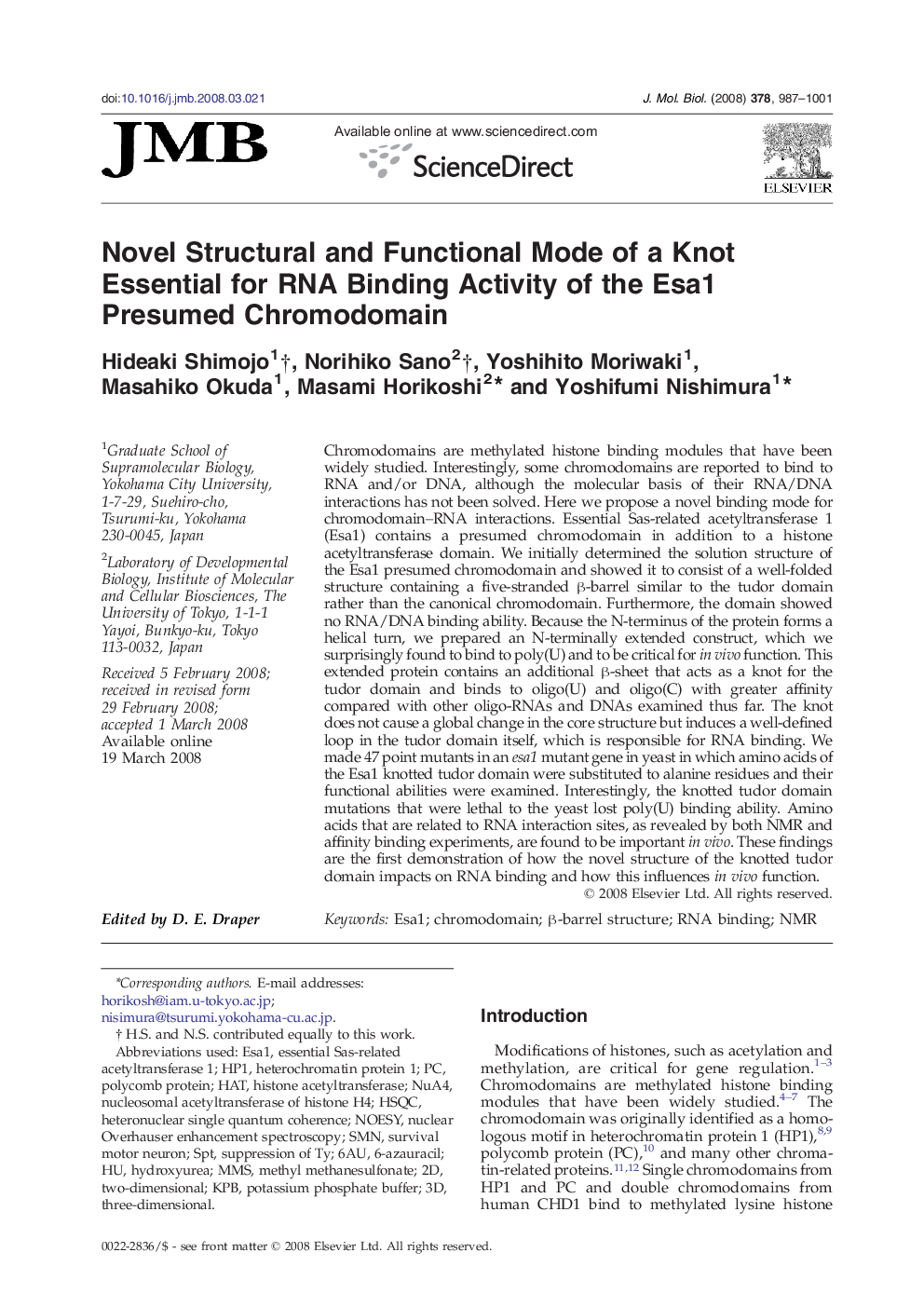| کد مقاله | کد نشریه | سال انتشار | مقاله انگلیسی | نسخه تمام متن |
|---|---|---|---|---|
| 2187570 | 1096127 | 2008 | 15 صفحه PDF | دانلود رایگان |

Chromodomains are methylated histone binding modules that have been widely studied. Interestingly, some chromodomains are reported to bind to RNA and/or DNA, although the molecular basis of their RNA/DNA interactions has not been solved. Here we propose a novel binding mode for chromodomain–RNA interactions. Essential Sas-related acetyltransferase 1 (Esa1) contains a presumed chromodomain in addition to a histone acetyltransferase domain. We initially determined the solution structure of the Esa1 presumed chromodomain and showed it to consist of a well-folded structure containing a five-stranded β-barrel similar to the tudor domain rather than the canonical chromodomain. Furthermore, the domain showed no RNA/DNA binding ability. Because the N-terminus of the protein forms a helical turn, we prepared an N-terminally extended construct, which we surprisingly found to bind to poly(U) and to be critical for in vivo function. This extended protein contains an additional β-sheet that acts as a knot for the tudor domain and binds to oligo(U) and oligo(C) with greater affinity compared with other oligo-RNAs and DNAs examined thus far. The knot does not cause a global change in the core structure but induces a well-defined loop in the tudor domain itself, which is responsible for RNA binding. We made 47 point mutants in an esa1 mutant gene in yeast in which amino acids of the Esa1 knotted tudor domain were substituted to alanine residues and their functional abilities were examined. Interestingly, the knotted tudor domain mutations that were lethal to the yeast lost poly(U) binding ability. Amino acids that are related to RNA interaction sites, as revealed by both NMR and affinity binding experiments, are found to be important in vivo. These findings are the first demonstration of how the novel structure of the knotted tudor domain impacts on RNA binding and how this influences in vivo function.
Journal: Journal of Molecular Biology - Volume 378, Issue 5, 16 May 2008, Pages 987–1001